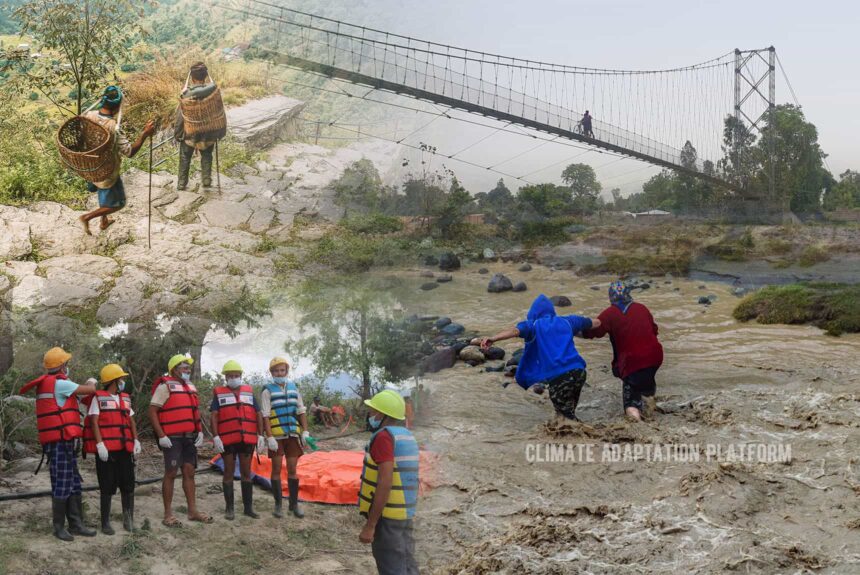Nepal, a developing country, is highly vulnerable to climate change impacts. Asian Development Bank’s study reveals that the government is at risk of losing 2.2% of its annual GDP by 2050 due to the changing climate (Climate change overview, 2021).
Nepal’s location being landlocked in the Himalayas between India and China contributes to its vulnerability. The country also has a diverse terrain –mountainous on the northern side and home to the world’s highest peak, including Mount Everest, and low-lying in the southern part of the country with an elevation of around 150 feet above sea levels.
To help hard-to-reach communities in Nepal with conventional emergency services, its local NGOs have partnered with a charitable institution, Mercy Corps, to prepare them for disasters such as floods, heavy rains, and intense storms through a simulation exercise.
One of these hard-to-reach places is the Kutiyakabar community along the banks of the Jogbuda river, which can only be accessed through a single narrow suspension bridge. Aside from Kutiyakabar, there are other hard-to-reach places in Nepal.
According to Flood Resilience Portal:
“Since July 2021, The Zurich Flood Resilience Alliance and Mercy Corps have been working with Nepal’s National Environment and Equity Development Society (aka NEEDS Nepal) to measure levels of resilience in places like Kutiyakabar and Kuna and implement ways to improve it.”
“As part of the programme, a Community Disaster Management Committee (CDMC) was formed, along with three task forces covering Search & Rescue, First Aid and Early Warning Systems (EWS). Last month, the committee decided to simulate a flooding event.”
To learn more about Nepal’s flood resilience through conducting a simulation exercise, click the link below:
Other vulnerable, remote, and hard-to-reach places can follow this example from Nepal to increase their climate resilience.
By tapping NGOs, international or local charitable and funding organisations, and their national or local disaster management agencies for resources and expertise, it can support communities to adapt and prepare for the increasing impacts of climate change.
Sources:
Climate Change Overview. (2021). World Bank Group. Retrieved from https://climateknowledgeportal.worldbank.org/country/nepal
Joshi, N. & Duthie, A. (2022 July 27). How a simulation exercise can prepare remote communities for flood emergencies. Flood Resilience Portal. Retrieved from https://floodresilience.net/blogs/flood-emergency-simulation-exercise-nepal/
IMAGE CREDITS:
- Simulation image (Flood Resilience Portal)
https://floodresilience.net/blogs/flood-emergency-simulation-exercise-nepal/ - Footbridge image (Flood Resilience Portal)
https://floodresilience.net.np/%E0%A4%AC%E0%A5%8D%E0%A4%B2%E0%A4%97/kutiyakabar-community-prepares-for-flood-as-monsoon-approaches/



Leave a Reply